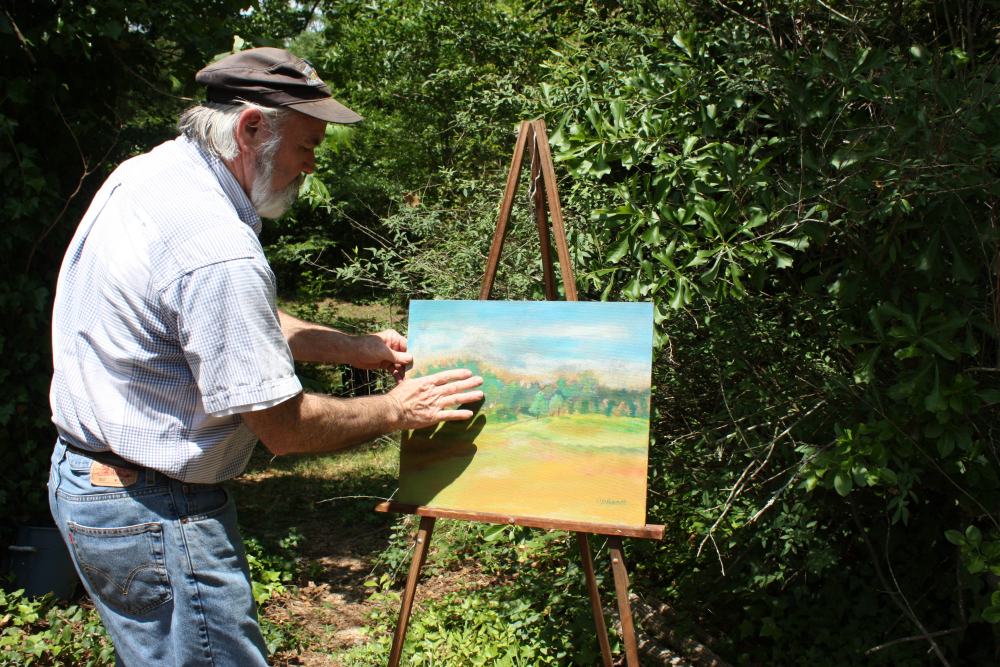Charles Jenkins is an innovative painter, basket weaver, and multitask artist, but most of all, he is a fantastic storyteller with love of his crafts and a passion for sharing art that carries sentimental value.
Charles Jenkins was born in Thomastown, MS, and has been a gifted artist since he was very young. Jenkins’ grandmother and her love for flowers were a great source of inspiration for the young artist. “She would give me some paper or buy me a coloring book,” he recounts, “and she would put me in the counter somewhere and say: ‘Baby, draw me this flower’ and so that’s what I would do.”
Interview with Charles Jenkins
Jenkins still recalls his first day of art class. “[The teacher] put a piece of mistletoe right in front of me and gave me a watercolor set and said, ‘I want you to paint that for me.’ And I did, and she looked at it and said, ‘Well, I can’t help you.’” Young Jenkins was too talented an artist already.
Later, Jenkins took a correspondence class called “The Famous Artist School”. Norman Rockwell, who was one of the instructors of the school, noticed Jenkins’s talent and gave him some advice that he still follows today: How you develop your gift depends on how much you practice it.
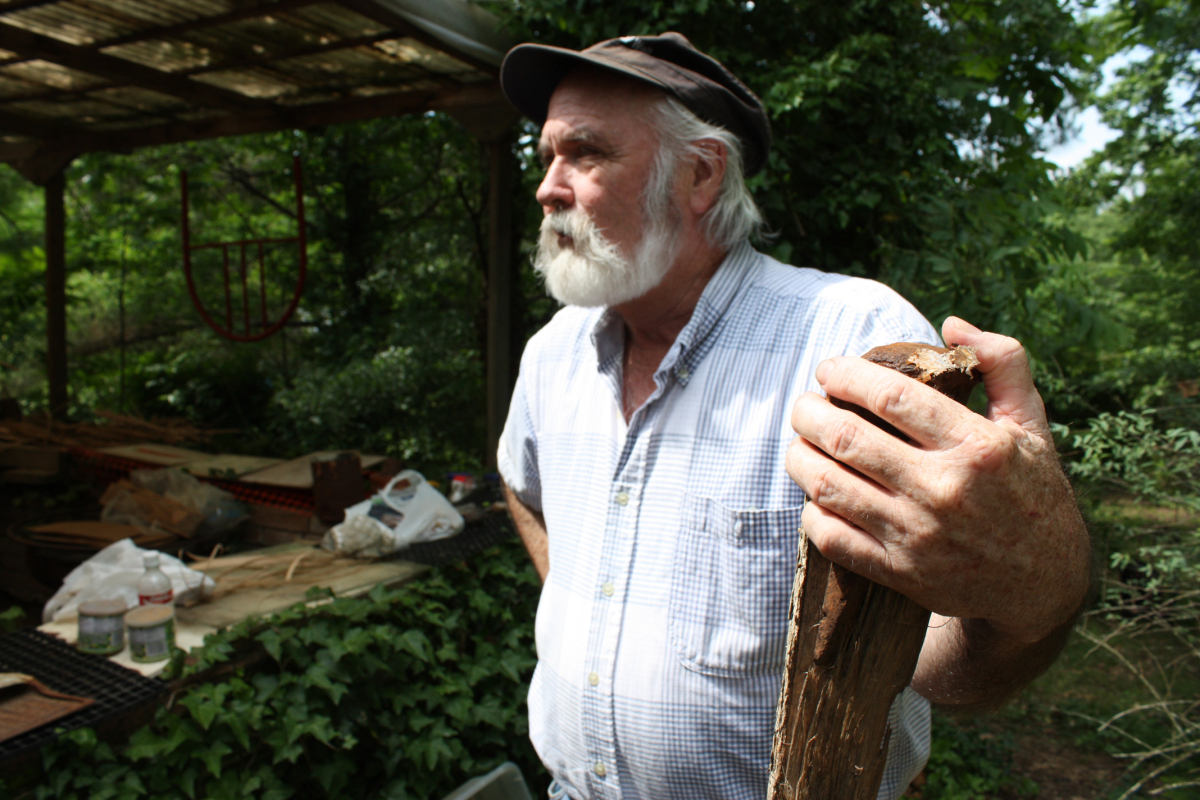
Charles Jenkins has never stopped practicing. Even his time at the Army during the Vietnam War was dedicated to the arts. He recalls doing “poodle drawings for the Colonel” during his time at Fort Hood.
Jenkins learned the art of weaving baskets from his father, Ballard Jenkins, a master craftsman and part-Cherokee Indian. Two Choctaw Indians that lived in the Pearl River Reservation, Elijah and Melvin Henry, taught Jenkins and his father many secrets about the art of weaving baskets. From Elijah and Melvin, they learned the secret of pulling strips along with many other ways to work in harmony with nature.
“We went over one day [to Elijah Henry’s house], and it was really windy,” said Jenkins. “Elijah Henry came out on the porch, he looks around, and said, ‘Bad day to make a basket.’ He goes back inside and Dad says, ‘What in the world is he talking about?’ [Dad] knocked on the door…and [Elijah] explained, ‘Well, if the wind is out in the north, you cannot make baskets. You cannot do woodwork because the wind is dry. It will not work. It will not pull. You want the wind out of the south; that is the moist wind.’”
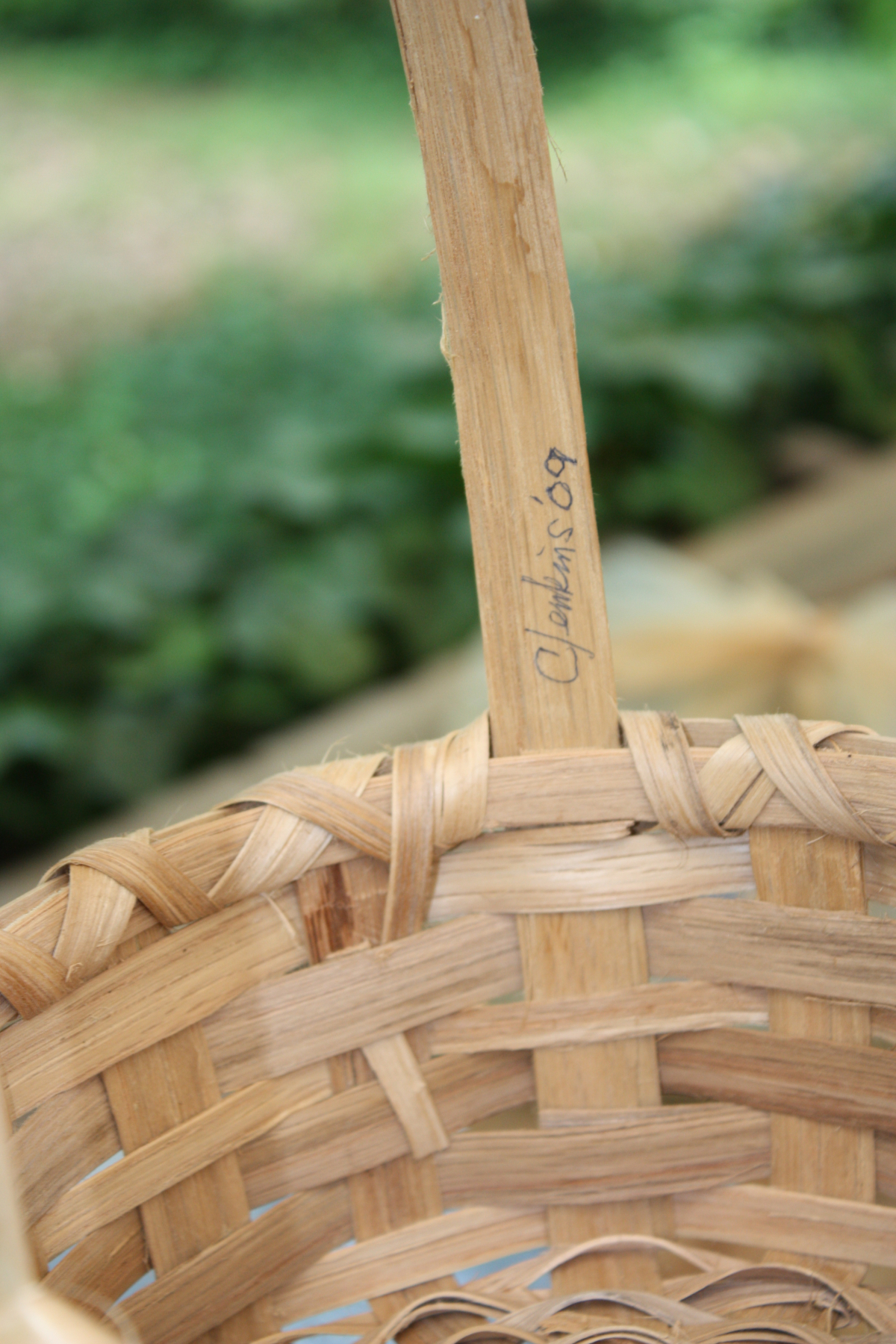
Both Ballard and Charles Jenkins were members of the Mississippi Craftsman Skills Center. This gave their family basket craft business a lot of visibility. Ballard was very traditional, and only made baskets according to traditional design, but his son was always open to innovation. He took all sorts of suggestions from customers requesting specific types of baskets and came up with a many ideas of his own. He called one of his original baskets the “Laura Bush basket” – a special two-tiered creation for carrying net needles that could be folded for easy transportation. He sent one of these baskets as a gift to its namesake, former president George W. Bush’s wife.
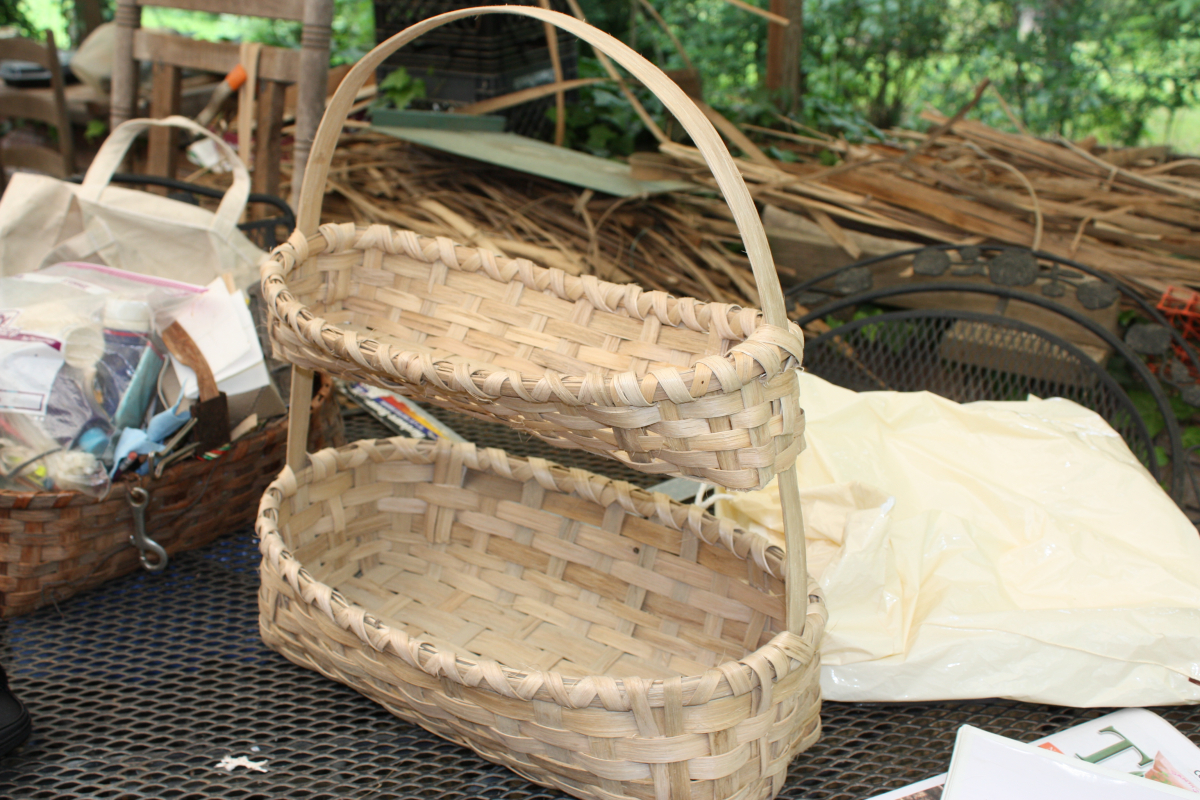
After 38 years of crafting experience, Charles Jenkins continues to weave baskets. He notices, though, this craft art is decaying, and few people want to learn it. “I had two or three people that wanted to learn how [to weave baskets],” Jenkins recalls, “but when they found out how much work was involved with it, they didn’t come back. Because when you find a tree, it’s usually two miles in the woods, and you can’t drive up next to it… By the time they get back to the truck with that piece of wood, they’re going, ‘I don’t know if I am really interested in doing this or not’ because it’s really a lot of work.”
Jenkins uses other parts of nature for his innovative art as well. He has done pen-and-ink drawings on corn shucks, and is well-known for his mud paintings. For these paintings, Jenkins collects fourteen natural shades of mud, ranging from dark brown to white to red. For other colors, he dyes the mud with his own unique process using natural items such as tea, berries, roots, coffee, pollen and even walnuts.
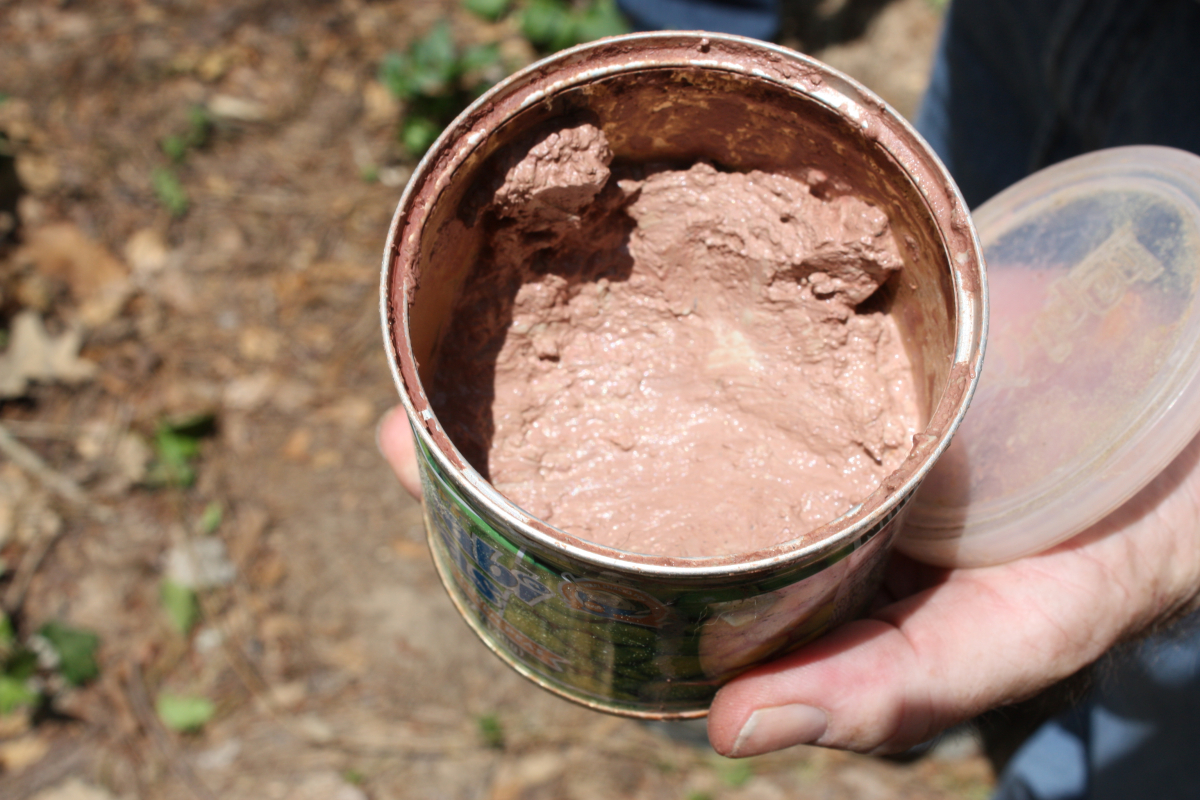
He paints mostly landscapes, often of Delta scenes using mud he gathers from nearby rivers.
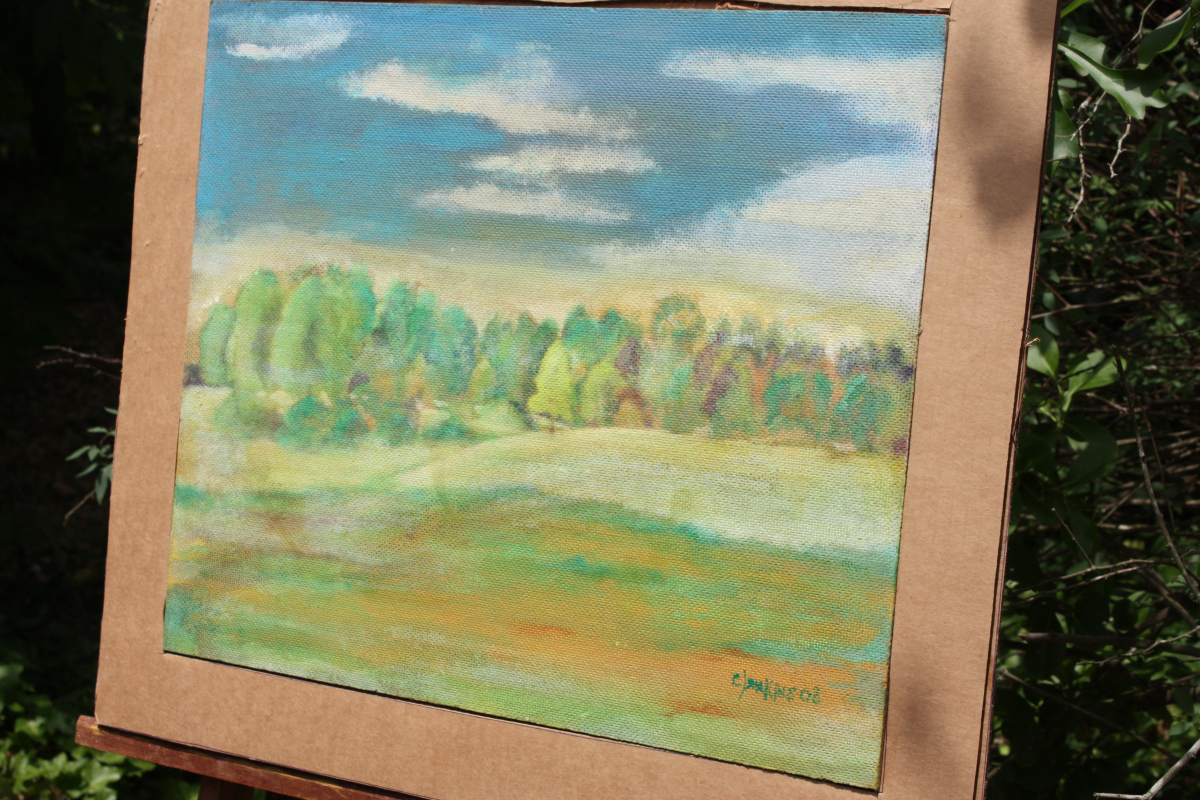
Charles Jenkins likes for his work to have significant sentimental value. One way he does this is through what he calls vessel pictures, where he uses a unique fruit jar, then adds to the jar particular tastes and colors that represent that person and their achievement. “They are the vessel, their spirit,” the artist explains.
But Charles Jenkins does not limit himself to making baskets and painting. He is continually innovating and learning to use new materials. “To me it’s more appealing moving away from the traditional. Because it’s different. Nobody else is doing it.”
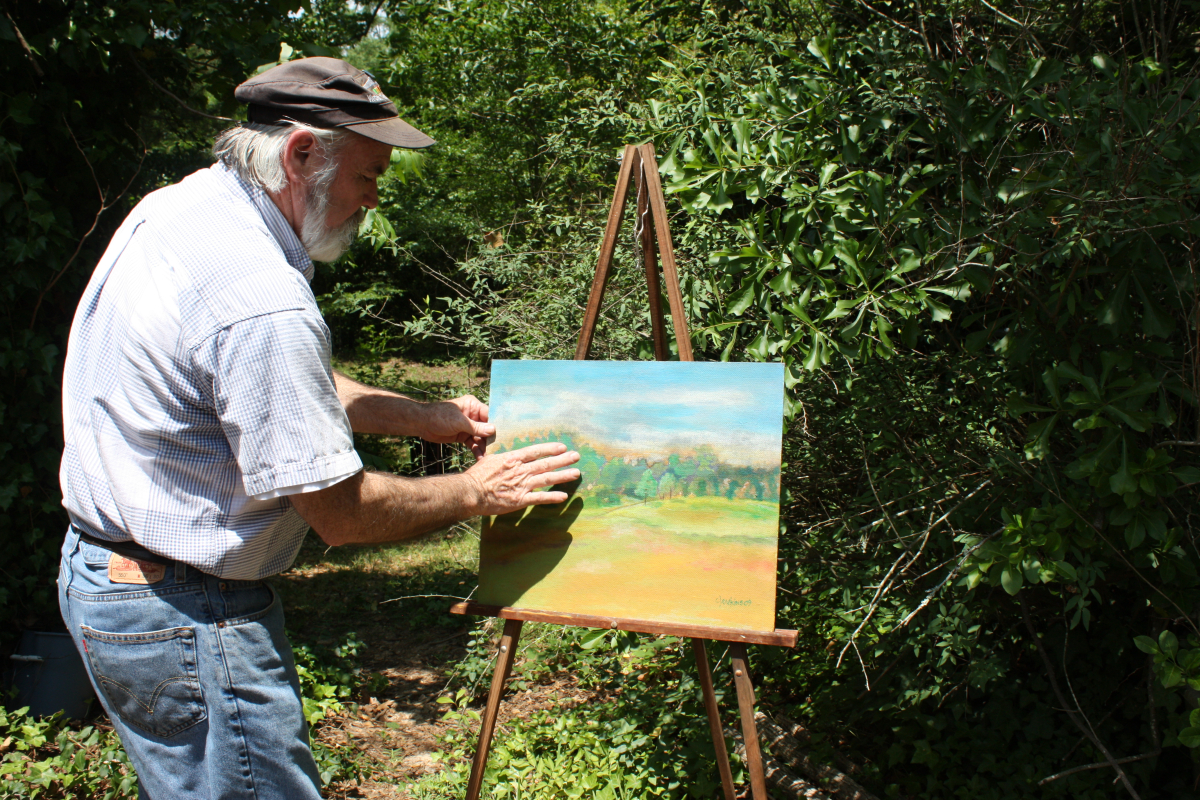
Jenkins tends to give away more paintings than he sells. He recalls an instance when he showed a woman a mud painting of a magnolia that he’d done for her and she began to cry. “Why would you like to charge anyone for anything if the respond like that to what you give them?” the artist asks. Jenkins takes as much joy in sharing his art as he does creating it. “I really enjoy the giving and watching the reaction of people when they get it, because they wanted it.” Jenkins explains. “That, to me, is worth the whole bit.”
Charles Jenkins can be contacted via email at thechasj1@yahoo.com.

